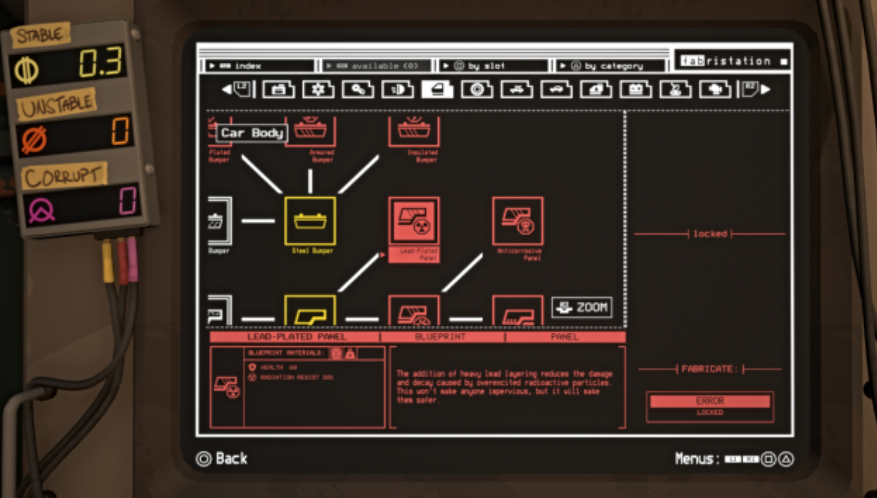Gaming
Pacific Drive – How to Increase Radiation Resistance

Radiation resistance is a critical aspect of health and well-being, particularly in today’s world where exposure to various forms of radiation is inevitable. From natural sources like cosmic rays and radon to artificial sources such as medical imaging procedures and electronic devices, humans are constantly exposed to radiation in varying degrees. In the article, we set the stage by briefly discussing the significance of radiation resistance and introduce the concept of the Pacific Drive approach, which emphasizes a comprehensive strategy for increasing resilience against radiation exposure.
Read Also: Pacific Drive – How to Use the Tinker Station
What is Radiation Resistance in Pacific Drive?
Radiation resistance in Pacific Drive refers to the ability of individuals and their vehicles to withstand and mitigate the harmful effects of radiation exposure within the game environment. In Pacific Drive, players navigate through a world where radiation is a pervasive hazard, threatening health and safety. Radiation resistance is essential for survival and successful progression through the game.
Within the context of Pacific Drive, radiation resistance encompasses several elements:
- Personal Protection: Players need to safeguard themselves against radiation while exploring on foot. Without adequate protection, radiation can gradually deplete the player’s health, making survival more challenging. Personal protective gear, such as lead aprons, can be crafted to mitigate the effects of radiation and enhance resistance.
- Vehicle Protection: Vehicles in Pacific Drive serve as a crucial means of transportation and shelter. While inside the vehicle, players are shielded from radiation by the vehicle’s structure. However, prolonged exposure to radiation or damage to the vehicle may compromise its protective capabilities. Upgrading the vehicle with reinforced panels, such as lead-plated panels, increases its resistance to radiation and ensures safer traversal through hazardous areas.
- Resource Management: Acquiring materials necessary for crafting radiation-resistant gear is an integral aspect of gameplay. Players must explore the game world, gather resources, and craft protective equipment to enhance their radiation resistance. This resource management aspect adds depth to the gameplay experience and emphasizes the importance of strategic planning and exploration.
Overall, radiation resistance in Pacific Drive is a key gameplay mechanic that adds complexity and challenge to the game. By effectively managing resources, crafting protective gear, and upgrading vehicles, players can increase their resilience to radiation and improve their chances of survival in the hazardous environment of Pacific Drive.
How to Increase Radiation Resistance
Boosting your radiation resistance on Pacific Drive requires thorough exploration and resource gathering before unlocking essential upgrades. Patience is key, as obtaining the necessary materials may take some time, but the rewards are worth it.

Enhancing Body Radiation Resistance:
Traversing on foot leaves you vulnerable to radiation, gradually sapping your health. Crafting specific items can help mitigate this risk. Here’s how:
- Visit the Outfitting Station.
- Navigate to the Radiation Equipment section.
- Craft protective gear like the Lead Apron, which offers basic defense.
Note: Acquiring lead platelets, a key ingredient, may prove challenging initially.
Improving Car Resistance:
While your car typically shields you from radiation during early journeys, prolonged exposure or damage may necessitate upgrades for added protection. Follow these steps:
- Access the Fabrication Station.
- Locate the Car Body tab.
- Spend two pieces of Fabric to unlock the Lead-Plated Panel upgrade.
This enables crafting of fortified panels at the workbench. Similar to body protection, sourcing the required materials may require venturing deeper into hazardous zones.
FAQs
Are there specific areas in Pacific Drive where radiation is more prevalent?
Yes, Pacific Drive features various zones with differing levels of radiation intensity. Certain areas may have higher concentrations of radiation, posing greater risks to players and vehicles. It’s essential to exercise caution and use appropriate protective measures when exploring these hazardous zones.
What resources are essential for increasing radiation resistance in Pacific Drive?
Key resources for enhancing radiation resistance include lead platelets for crafting protective gear and fabric for vehicle upgrades. These resources can be found by exploring the game world, looting abandoned structures, or completing specific quests and challenges. Managing and prioritizing resource gathering is vital for effectively boosting radiation resistance.
Can radiation resistance be improved through gameplay progression in Pacific Drive?
Yes, as players progress through Pacific Drive and gain experience, they’ll unlock new crafting recipes, upgrades, and abilities that enhance radiation resistance. Additionally, completing certain quests or achievements may grant access to unique items or resources that further bolster resistance capabilities. Continuous gameplay and strategic decision-making contribute to gradual improvements in radiation resistance over time.
How does radiation resistance impact gameplay dynamics in Pacific Drive?
Radiation resistance significantly influences gameplay dynamics by affecting the player’s ability to explore hazardous environments, engage in combat encounters, and complete objectives safely. Higher radiation resistance allows for more extensive exploration of radiation-heavy areas, access to valuable resources, and increased survivability in challenging situations. As a core aspect of gameplay, radiation resistance adds depth and strategic complexity to the Pacific Drive experience.
Conclusion
In conclusion, increasing radiation resistance requires a multifaceted approach that addresses physical, mental, environmental, and social factors. By adopting the Pacific Drive approach and implementing proactive strategies to enhance resilience, individuals can empower themselves to protect their health and well-being in the face of radiation challenges.












